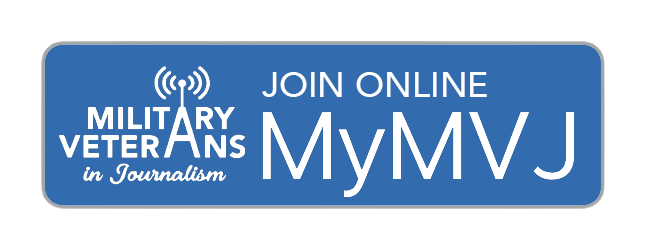by Kayleigh Casto
Military Veterans in Journalism continued its virtual convention Friday with a second day of panelists. Sharing insights into the new models of journalism was Jeff Jarvis, a CUNY Craig Newmark Graduate School of Journalism professor.
“Journalism is not a product, it’s a service,” he said. “We don’t just create a product called content to sell in a thing we call a publication. We have so many more tools at hand to listen to communities that have too long not been listened to, like veterans.”
Jarvis explained how communities became overlooked in journalism through the invention of high-speed printing presses during the era of Johanne Gutenburg, which created the idea of “mass media, mass marketing and mass culture.”
“The mass as an idea is fundamentally an insult to the public, because it says that everybody is all the same,” he said.
According to Jarvis, reporters have a unique opportunity to reinvent the field of journalism by understanding the needs of these underserved communities.
“Who are you serving? Who is it that needs your service of journalism? What do they need? Show the evidence of their definition of community. Show the evidence of their need as a community,” he said.
Reporters can help to foster the needs of these communities by introducing new perspectives in the newsroom, educating the community or facilitating informed public conversations. All of which promote what Jarvis called “a large canvas” for the future of journalism.
The session itself became a public conversation, with audience members offering ideas about models of journalism, and questioning Jeff directly.
Dan Lyons, a photo editor at Chalkbeat asked Jarvis about how local news models should engage with communities who are underserved or unserved by any news outlet
Jarvis pointed to the Institute for Nonprofit News and Chalkbeat as examples of where innovation can occur for legacy media organizations to follow. One example of such innovation, he noted, is Chalkbeat’s development of tools that compel reporters to decide beforehand why a story should be done, and afterward to measure the impact.
Jarvis elaborated on the future of journalism in revenue opportunities saying, “We have to reinvent the fundamental metrics of success in journalism and in media around quality and value.”
He described the use of membership models as a valuable way to fund reporting. Membership recognizes the reader as a community member while sharing their needs, interests and circumstances, furthering the affinity between communities and journalism, he said. But it was clear from the exchanges he sees many more viable models for funding strong reporting.
He spoke, for instance, about the work of organizations like Buzzfeed and Vice to sell skills rather than eyeballs on a story – as in, the skill of creating advertising their audiences actually care about. Those publishers take creative control over their advertising to do so, using the profits to fund their reporting.
Whether such skills can be applied in a revenue model by local news publishers, he’s still working on. “It could be that we establish a reputation for knowing how to serve people and listen to them well,” he said. “We’ve got to figure out how to do it or else, there’s not enough money in philanthropy…subscriptions…or the government to fund all the journalism we need.”
Several attendees wanted to know whether he was hopeful about the future of the industry.
“Yeah,” Jarvis said, matter-of-factly. “If I weren’t I’d be a fraud teaching journalism school…and the reason I’m hopeful is my students.” Jarvis teaches engagement at the CUNY J-School and says graduates of the program are in high demand because of the skills they bring to the newsroom. They understand “how to listen to the public and create a feedback loop that is more than data and clicks, but that is substantive and valuable.”



